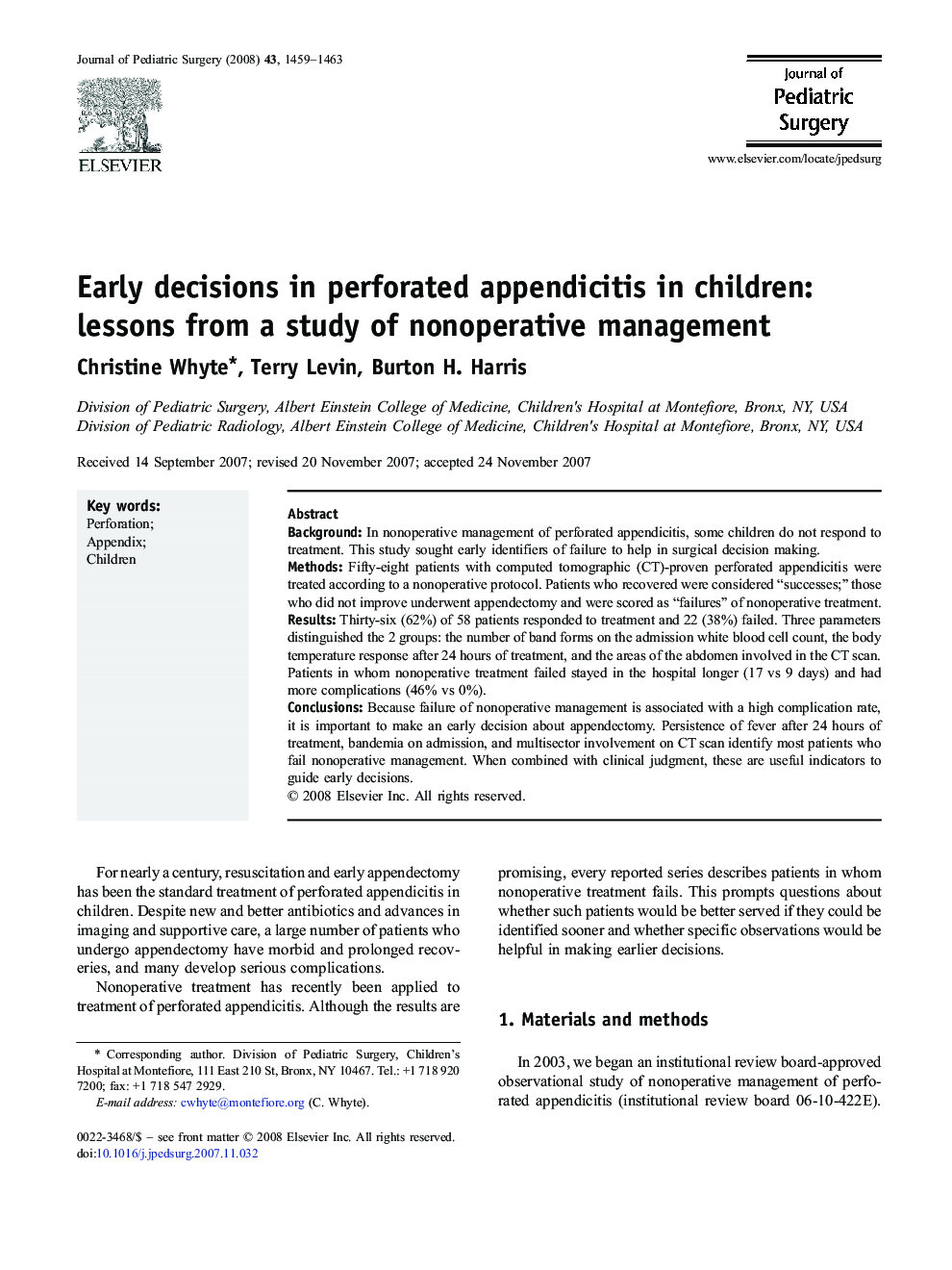| Article ID | Journal | Published Year | Pages | File Type |
|---|---|---|---|---|
| 4159134 | Journal of Pediatric Surgery | 2008 | 5 Pages |
BackgroundIn nonoperative management of perforated appendicitis, some children do not respond to treatment. This study sought early identifiers of failure to help in surgical decision making.MethodsFifty-eight patients with computed tomographic (CT)-proven perforated appendicitis were treated according to a nonoperative protocol. Patients who recovered were considered “successes;” those who did not improve underwent appendectomy and were scored as “failures” of nonoperative treatment.ResultsThirty-six (62%) of 58 patients responded to treatment and 22 (38%) failed. Three parameters distinguished the 2 groups: the number of band forms on the admission white blood cell count, the body temperature response after 24 hours of treatment, and the areas of the abdomen involved in the CT scan. Patients in whom nonoperative treatment failed stayed in the hospital longer (17 vs 9 days) and had more complications (46% vs 0%).ConclusionsBecause failure of nonoperative management is associated with a high complication rate, it is important to make an early decision about appendectomy. Persistence of fever after 24 hours of treatment, bandemia on admission, and multisector involvement on CT scan identify most patients who fail nonoperative management. When combined with clinical judgment, these are useful indicators to guide early decisions.
